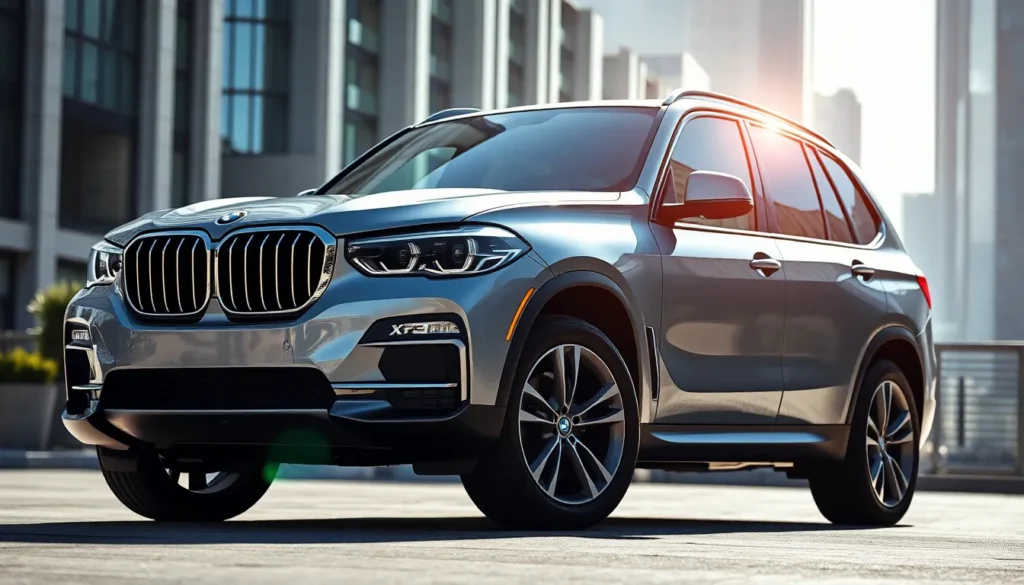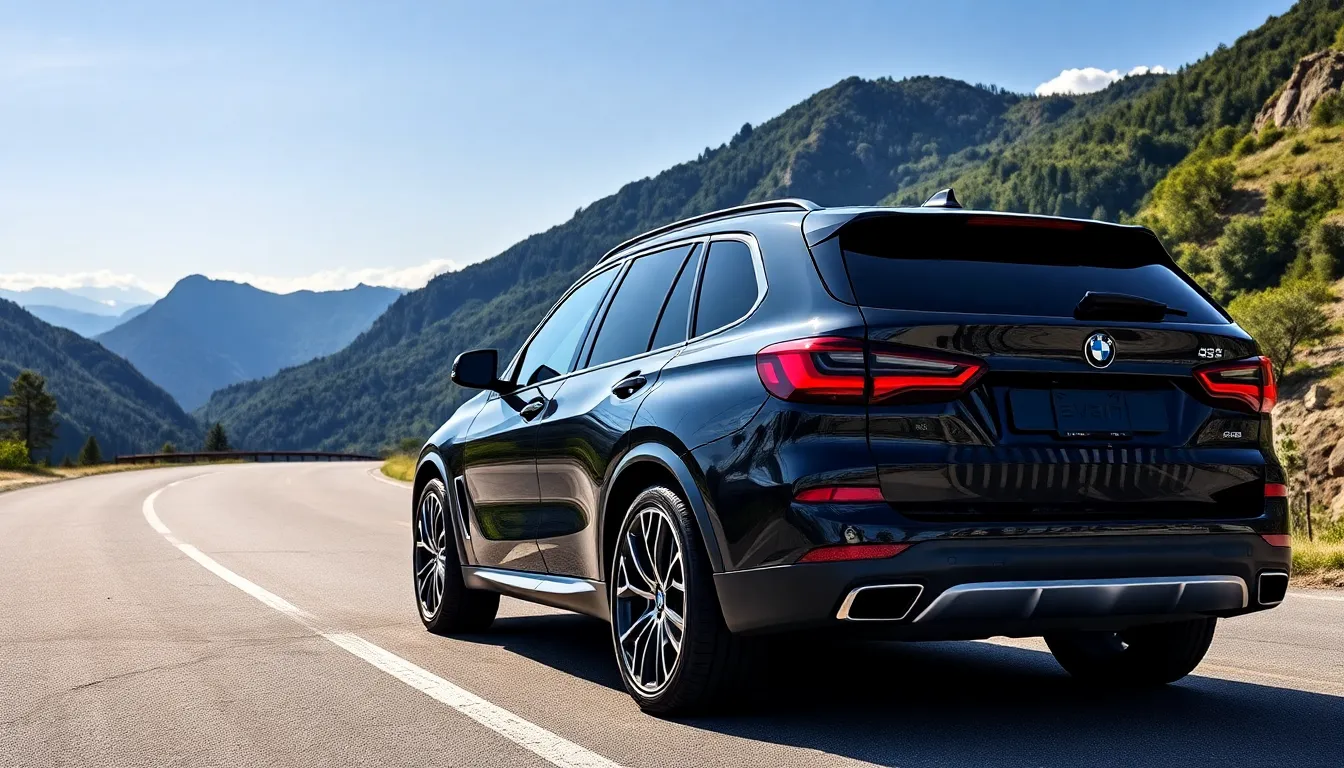
In the competitive landscape of luxury SUVs, the BMW X5 stands out for its blend of performance, comfort, and cutting-edge technology. However, it faces stiff competition from a range of formidable rivals that cater to discerning buyers seeking similar attributes. Understanding these competitors is crucial for anyone considering an investment in this segment.
From the sleek Mercedes-Benz GLE to the versatile Audi Q7, each contender brings unique strengths to the table. As consumers weigh their options, it’s essential to explore how these vehicles stack up against the X5 in terms of design, features, and overall driving experience. This article delves into the key competitors of the BMW X5, highlighting what makes each one a worthy alternative in the luxury SUV arena.
BMW X5 Competitors
The BMW X5 stands out in the luxury SUV segment, showcasing a blend of performance, spaciousness, and advanced technology. This midsize SUV offers a range of powerful engine options, ensuring exhilarating driving experiences. The available inline-six and V8 engines deliver strong acceleration, while the hybrid variant provides efficiency without sacrificing power.
Interior comfort remains a priority in the X5, featuring high-quality materials and spacious seating for up to five passengers. The cargo area accommodates 33.9 cubic feet of luggage, expanding to 72.3 cubic feet with the rear seats folded down. Luxury amenities, including heated and ventilated seats, a panoramic sunroof, and customizable ambient lighting, enhance the driving experience.
The technology suite includes a large touchscreen display, a responsive infotainment system, and advanced driver-assistance features. Standard Apple CarPlay and Android Auto ensure seamless smartphone integration, while optional upgrades provide additional functionalities, such as a premium sound system and navigation.
Overall, the BMW X5 effectively combines performance, luxury, and cutting-edge technology, making it a formidable competitor in the luxury SUV market.
Key Features of BMW X5

The BMW X5 excels in the luxury SUV market with its robust performance, spacious interior, and advanced technology.
Performance
- Engine options include a powerful inline-six, a robust V8, and a hybrid variant for enhanced efficiency.
- Acceleration from 0 to 60 mph takes just 5.3 seconds with the V8 engine.
- Adaptive suspension optimizes ride quality, providing a smooth and responsive driving experience.
Interior Comfort
- Cabin construction features high-quality materials for a premium feel.
- Seating accommodates up to five passengers with ample legroom and headroom.
- Cargo capacity offers 33.9 cubic feet, expandable to 72.3 cubic feet with rear seats folded.
Luxury Amenities
- Heated and ventilated seats enhance passenger comfort in various weather conditions.
- Panoramic sunroof contributes to a spacious, airy feel in the cabin.
- Customizable ambient lighting sets the desired mood for any journey.
Technology
- Infotainment system includes a large touchscreen display for intuitive access to features.
- Standard Apple CarPlay and Android Auto ensure seamless smartphone connectivity.
- Advanced driver-assistance features enhance safety and awareness on the road.
Safety
- Multiple airbags and advanced stability control systems prioritize occupant protection.
- Adaptive cruise control maintains a safe distance from other vehicles autonomously.
- Blind-spot monitoring alerts the driver to potential dangers in adjacent lanes.
The BMW X5’s blend of performance, comfort, and technology positions it as a leading choice among luxury SUVs, competing effectively against rivals such as the Mercedes-Benz GLE and Audi Q7.
Major Competitors
The BMW X5 faces tough competition in the luxury SUV market. Key rivals such as the Audi Q7, Mercedes-Benz GLE, and Porsche Cayenne each offer distinct advantages.
Audi Q7
The Audi Q7 emphasizes a refined interior with high-quality materials and advanced technology. It features a 3.0-liter V6 engine that produces 333 horsepower and accelerates from 0 to 60 mph in 5.7 seconds. The Q7 accommodates up to seven passengers, offering flexible seating arrangements and a cargo capacity of 14.2 cubic feet, expandable to 69.6 cubic feet with the rear seats folded. Notable tech offerings include a dual touchscreen interface and the Virtual Cockpit digital instrument cluster. Safety ratings are strong, supported by adaptive cruise control, lane-keeping assistance, and a comprehensive airbag system.
Mercedes-Benz GLE
The Mercedes-Benz GLE showcases luxurious design and an array of powerful engine options, including a turbocharged inline-six that generates 362 horsepower. It can accelerate from 0 to 60 mph in just 5.5 seconds. The GLE offers an interior featuring premium materials and spacious seating for five or seven, depending on the configuration. Cargo space measures 33.3 cubic feet, expandable to 74.9 cubic feet with rear seats down. The MBUX infotainment system integrates voice control and navigation features, enhancing user experience. Advanced safety features, such as active brake assist and blind-spot monitoring, contribute to its robust safety profile.
Porsche Cayenne
The Porsche Cayenne stands out with exceptional performance and sporty handling. Its base model offers a turbocharged V6 engine with 335 horsepower, reaching 0 to 60 mph in just 5.9 seconds. The Cayenne provides seating for up to five passengers, with ample room and high-quality finishes throughout the cabin. It offers a cargo capacity of 27.2 cubic feet, which expands to 60.3 cubic feet with the rear seats folded. The Porsche Communication Management system integrates touchscreen navigation and smartphone connectivity. Performance-oriented features, such as adaptive air suspension and all-wheel drive, enhance its driving dynamics and stability.
Comparison of Features
The BMW X5 competes fiercely with luxury SUVs, offering strengths in performance, interior quality, and technology. This section delves deeper into these critical features, comparing the X5 with its key rivals.
Performance
BMW X5 delivers impressive performance with a choice of inline-six and V8 engines. The V8 engine achieves 0 to 60 mph in 5.3 seconds, showcasing rapid acceleration. Audi Q7 features a 3.0-liter V6 engine with 333 horsepower, achieving 0 to 60 mph in 5.7 seconds. Mercedes-Benz GLE offers a turbocharged inline-six rated at 362 horsepower, completing 0 to 60 mph in 5.5 seconds. Porsche Cayenne emphasizes sporty handling with its turbocharged V6 engine, producing 335 horsepower, and reaches 0 to 60 mph in 5.9 seconds. Each competitor provides unique powertrain choices, catering to different driving preferences.
Interior Quality
Interior quality remains a prominent factor in luxury SUVs. BMW X5 prioritizes comfort with premium materials and spacious seating for five passengers. It provides a cargo capacity of 33.9 cubic feet, expandable to 72.3 cubic feet when rear seats are folded. Audi Q7 features a refined interior design, accommodating up to seven passengers with user-friendly layouts. Mercedes-Benz GLE excels in luxurious design and spaciousness, incorporating high-end materials for a sophisticated ambience. Porsche Cayenne balances performance and luxury, with high-quality finishes that complement its sporty character. Each vehicle exemplifies meticulous attention to detail in interior design.
Technology
Technology integration plays a crucial role in modern luxury SUVs. BMW X5 boasts a large touchscreen display, an intuitive infotainment system, and standard Apple CarPlay and Android Auto for smartphone connectivity. Audi Q7 incorporates a dual touchscreen interface, combining functionality with advanced tech features. Mercedes-Benz GLE includes the MBUX infotainment system, which delivers voice-activated controls and responsive navigation. Porsche Cayenne offers performance-driven technology, enhancing the driving experience with features like a premium sound system. Each competitor’s technology suite caters to tech-savvy buyers.
Price Range of Competitors
The luxury SUV market features various price ranges among competitors of the BMW X5. Below is a breakdown of the starting prices for key rivals.
| SUV Model | Approximate Starting Price (USD) |
|---|---|
| BMW X5 | $65,000 |
| Audi Q7 | $57,000 |
| Mercedes-Benz GLE | $59,000 |
| Porsche Cayenne | $70,000 |
Audi Q7
Audi Q7 starts from approximately $57,000. It combines luxury and practicality with three rows of seating, making it an appealing choice for families while maintaining a competitive price in the luxury segment.
Mercedes-Benz GLE
Mercedes-Benz GLE presents starting prices around $59,000. It offers luxurious features and advanced technology, providing a high level of comfort and quality in its price category.
Porsche Cayenne
Porsche Cayenne, one of the pricier competitors, starts at approximately $70,000. It attracts buyers who prioritize performance and sporty design alongside luxury, justifying its higher price point.
The price differences among these competitors reflect their unique features and brand positioning. Understanding these ranges aids potential buyers in making informed decisions based on budget and desired attributes within the luxury SUV segment.
Conclusion
The BMW X5 remains a strong contender in the luxury SUV market. Its impressive performance and high-quality interior make it a top choice among buyers. While competitors like the Audi Q7, Mercedes-Benz GLE, and Porsche Cayenne each bring their own unique strengths to the table, the X5’s combination of power, comfort, and technology sets it apart.
Potential buyers can weigh these factors against their preferences and needs. Ultimately, understanding the strengths and weaknesses of each model will help them make a well-informed decision. The luxury SUV segment is diverse and offers plenty of options, but the BMW X5 consistently proves to be a remarkable choice.













